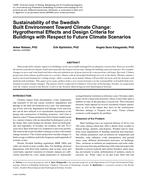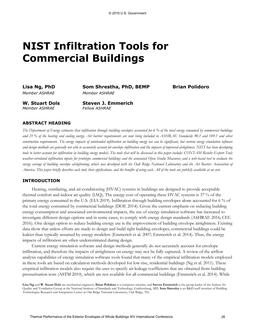The effects of two readily available air-conditioner control strategies on dehumidification performance are discussed: fan “auto,” in which the indoor air circulation fan cycles on and off along with the compressor, and fan “on,” in which the fan operates continuously regardless of the on or off status of the compressor. Measured performance data are presented on two air-conditioning systems — a packaged terminal direct expansion, constant volume air conditioner without capacity modulation and a unitary direct expansion air conditioner with dual-speed compressor and indoor air fan motors.
Measurements of the condensate removal from the air conditioner as well as its transient sensible and latent cooling performance during cycling operation showed that the net moisture removal was reduced significantly when the fan operated continuously compared to when the fan cycled off with compressor. The average moisture-removal performance was relatively independent of the compressor run-time fraction in the fan “auto” mode, but it varied significantly in the fan “on” mode. The air-side transient performance measurements for the packaged terminal air conditioner showed that in a 20-minutes air-conditioning cycle — with the compressor on for i0 minutes and the fan operating continuously for the remaining I0 minutes — 19% of the moisture condensed during the compressor “on” cycle was re-evaporated back into the conditioned space. In another 10-minute cycle with only 5 minutes of compressor run time, condensate-side measurements showed that the moisture removal rate was reduced by 44% in fan “on” mode, compared to the fan “auto” mode.
The re-evaporation rate increased with increased number of cycles. The indoor humidity level was higher in fan “on” mode compared to the fan “auto” mode. It can be concluded that most air-conditioner duty-cycling devices, which let the indoor-air fan operate after the compressor turns off, will re-evaporate some of the condensed moisture on the cooling coil and in the drain pan back to the conditioned space. Such devices will result in increased indoor humidity level and associated discomfort.
Units: I-P
Citation: Symposium, ASHRAE Transactions, 1987, vol. 93, pt. 1, New York, NY
Product Details
- Published:
- 1987
- Number of Pages:
- 10
- File Size:
- 1 file , 940 KB
- Product Code(s):
- D-NY-87-19-4


